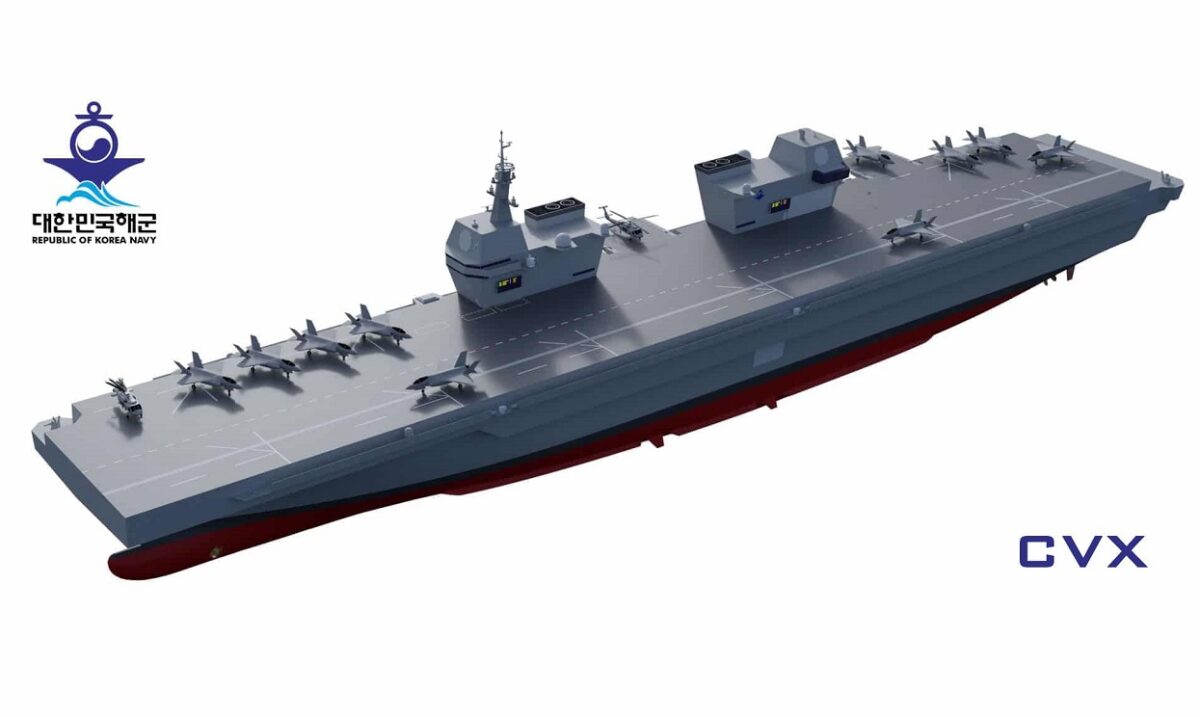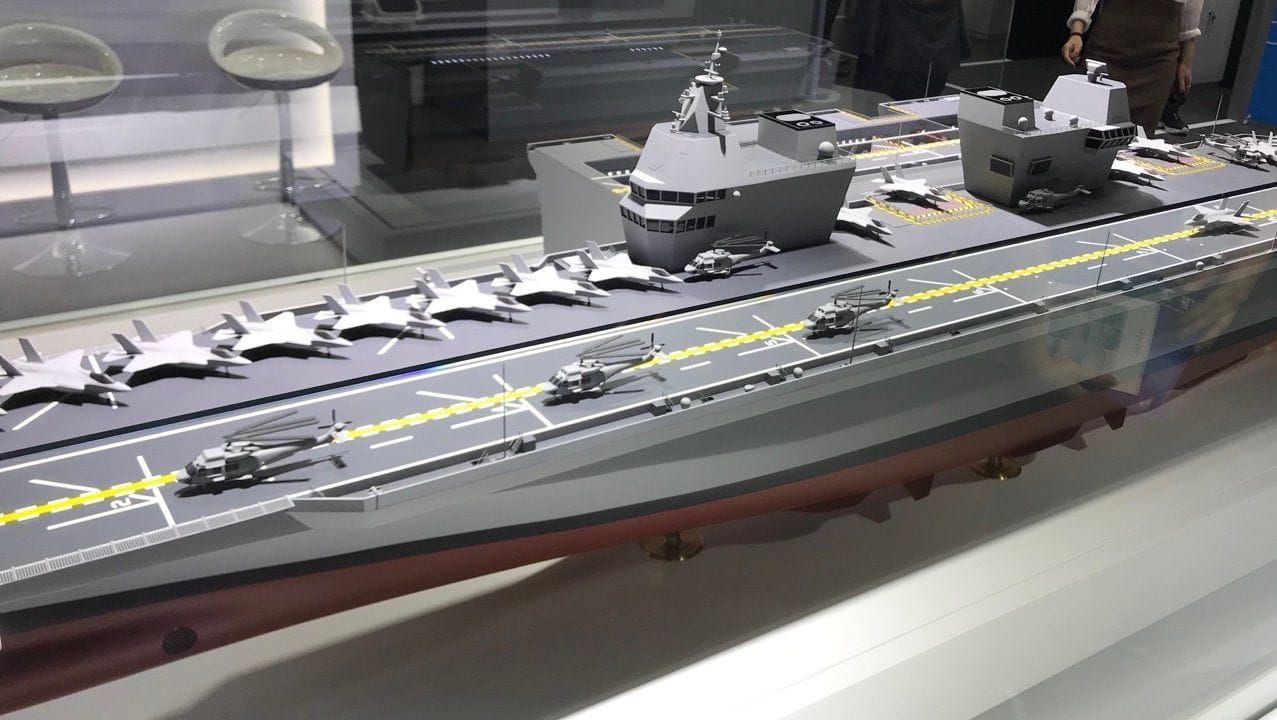South Korea Wants the CVX Aircraft Carrier? Much has been made about China’s ambitious aircraft carrier program and the threat it presents to the United States Navy in the Indo-Pacific region.
However, even as those are valid concerns, it overlooks the fact that Japan has seen the need to convert its Izumo-class multi-purpose operation helicopter destroyers into true aircraft carriers, capable of deploying the Lockheed Martin F-35 Joint Strike Fighter.
By the end of next year, Izumo’s conversion will be complete – and for the first time since the Second World War, Japan will have an aircraft carrier capable of conducting offensive operations.
It won’t be alone in the Indo-Pacific region.
In addition to India’s growing flattop fleet, which will see INS Vikrant – its first indigenously-built carrier – battle ready by the end of May; South Korea is now again revising its carrier ambitions. It was reported over the weekend that South Korea’s CVX aircraft carrier program could see a major turnover.
This is notable as the program had appeared “dead in the water” last year after a long hiatus that was brought on by budget cuts and domestic political disputes.
Now, South Korea’s Ministry of Defense is set to begin working on preliminary policy research on the feasibility of building a 50,000-tonne class aircraft carrier. If such a warship is actually built, it would be among the largest domestically-constructed carriers in the region.
South Korea’s CVX would be significantly larger than China’s Type 001 Liaoning and even India’s new flagship Vikrant – but also around the same size as the People’s Liberation Army Navy’s (PLAN’s) Type 002 Shandong, yet, still smaller than the newly-launched Type 003 Fujian.
Aircraft Carrier Change of Course for South Korea
Even as the South Korean MoD is leaning towards a medium-sized carrier, it could drop its plans of acquiring the F-35B – the short/vertical takeoff and landing (SVTOL) variant of the Lightning II, the aircraft that will be used on the Japanese Maritime Self-Defense Force flattops.
Instead, South Korea – which is also on track to become a major arms exporter – may seek to develop a naval variant of its KF-21 Boramae (“Falcon”), its indigenous fighter that is now in its critical testing phase.
As Naval News reported, the medium-sized aircraft carrier may also be equipped either with CATOBAR (Catapult Assisted Take-Off But Arrested Recovery) or STOBAR (Short Take-Off But Arrested Recovery) system, as KF-21N would not be able to take off or land vertically.
That would be a significant leap forward in carrier design for Seoul.
Of course, the bigger question is whether South Korea actually needs or simply wants a carrier.
Such a warship in its fleet would certainly send a strong message to Beijing and Pyongyang that South Korea is a power to be taken seriously in the region and beyond.
Moreover, it could also prove to the world that South Korea is a serious arms exporter.
Though the CVX is still on the drawing board, a betting man might even joke that it could be operational before Russia’s cursed carrier Admiral Kuznetsov returns to service.
MORE: F-35 – The Best Fighter Jet Ever?
MORE: SR-72 – A Mach 6 Bomber?
MORE: Su-57 – Is Russia’s Stealth Fighter Doomed?

Image: ROK Navy Handout.
Author Experience and Expertise
A Senior Editor for 19FortyFive, Peter Suciu is a Michigan-based writer. He has contributed to more than four dozen magazines, newspapers, and websites with over 3,200 published pieces over a twenty-year career in journalism. He regularly writes about military hardware, firearms history, cybersecurity, politics, and international affairs. Peter is also a Contributing Writer for Forbes and Clearance Jobs. You can follow him on Twitter: @PeterSuciu.

